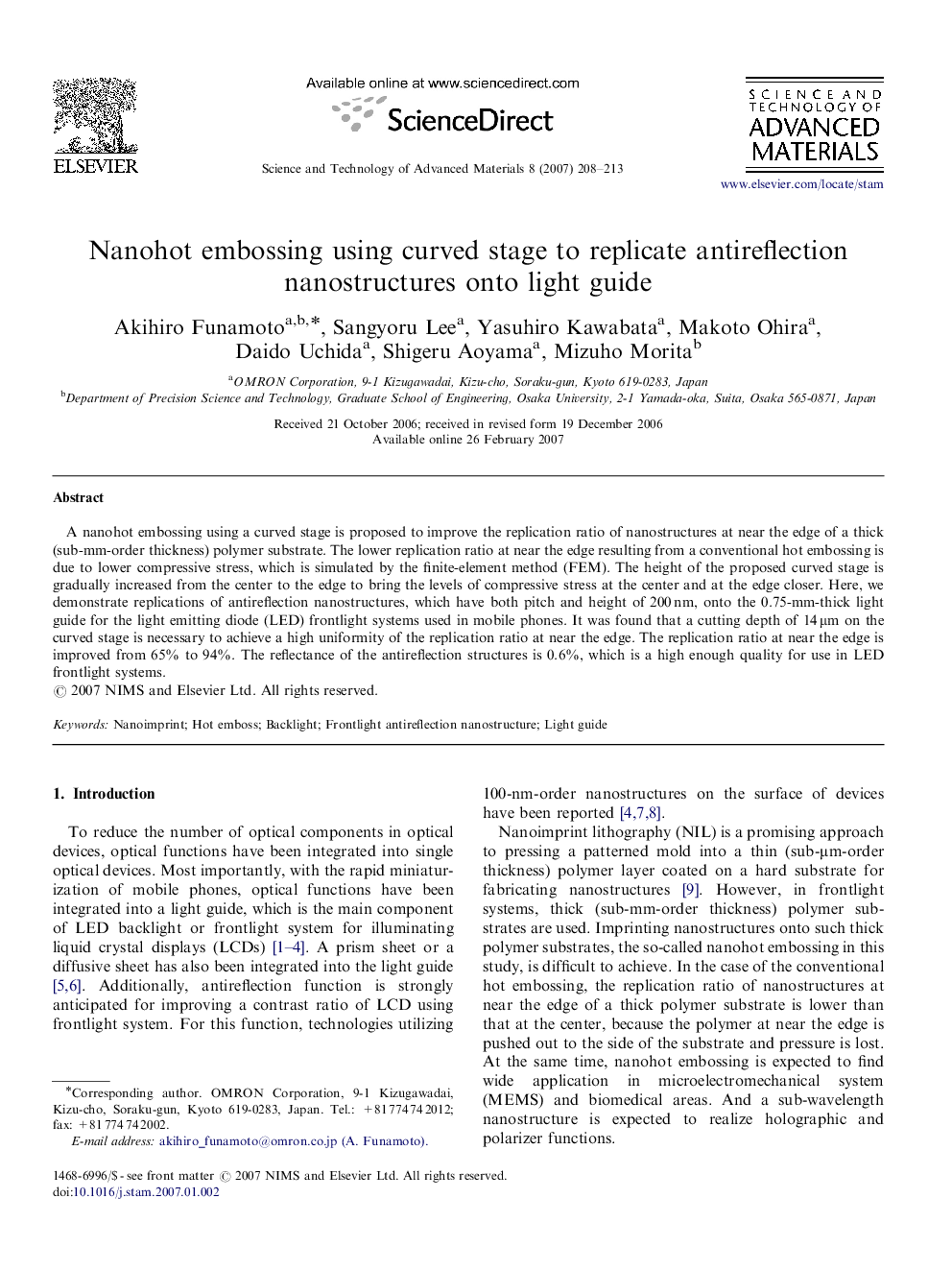| Article ID | Journal | Published Year | Pages | File Type |
|---|---|---|---|---|
| 1590814 | Science and Technology of Advanced Materials | 2007 | 6 Pages |
Abstract
A nanohot embossing using a curved stage is proposed to improve the replication ratio of nanostructures at near the edge of a thick (sub-mm-order thickness) polymer substrate. The lower replication ratio at near the edge resulting from a conventional hot embossing is due to lower compressive stress, which is simulated by the finite-element method (FEM). The height of the proposed curved stage is gradually increased from the center to the edge to bring the levels of compressive stress at the center and at the edge closer. Here, we demonstrate replications of antireflection nanostructures, which have both pitch and height of 200 nm, onto the 0.75-mm-thick light guide for the light emitting diode (LED) frontlight systems used in mobile phones. It was found that a cutting depth of 14 μm on the curved stage is necessary to achieve a high uniformity of the replication ratio at near the edge. The replication ratio at near the edge is improved from 65% to 94%. The reflectance of the antireflection structures is 0.6%, which is a high enough quality for use in LED frontlight systems.
Keywords
Related Topics
Physical Sciences and Engineering
Materials Science
Materials Science (General)
Authors
Akihiro Funamoto, Sangyoru Lee, Yasuhiro Kawabata, Makoto Ohira, Daido Uchida, Shigeru Aoyama, Mizuho Morita,
